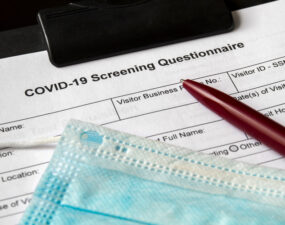Behavior usually spring up because of some underlying reasons. On the other hand, a habit which is a repeated behavior shows who the person is. You can dissect someone’s behavior like this with a simple tool which is the behavior tracking form. We’re here to give some insights about the structure and tips on how to use them.
The Structure of a Behavior Tracking Form
To do a behavior tracking efficiently, you need to jot down your findings in a good structure. Those structure are:
- Time of tracking
You can do this in two ways. You can write down Monday-Sunday (or whichever day you please. On the other hand, you could leave the time stamp blank so you can fill it when you conduct the behavior tracking activity. - Type of behavior
Every time you see a certain behavior that piqued your interest, write it down. Don’t write a lengthy elaboration. What you should do instead is to write down 3-4 sentences that captures the essence of the behavior. - Frequency
Then, go ahead and see whether the same behavior is repeated multiple times throughout the day. If so, count how many times it happened and write it down. - Cause of behavior
With this section, you could write down what you see was the trigger to the behavior that the subject did. You could also use a deeper analysis and write down the psychological causes. - Actions taken
Behavior tracking is not a passive activity. You should also respond to the actions done by the subject. Then, you should write it down in the behavior tracking form.
How To Track Someone’s Behavior Effectively
You do not only own the behavior tracking form. You also have to figure out a way on how to use it effectively.
Our first tip on that is to conduct your behavior tracking activity for a long time. One day won’t suffice. So do the activity with the behavior tracking form for a couple days or even a couple week. You will soon notice the patterns of behavior that the subject emits. Another tip is to not make it known that you are conducting an observation. When people feel observed, they usually aren’t acting as natural as they could. So, you could either blend in, opt to distance yourself, or use other tactics to make things seem natural.
The next tip is to complement the observation with other activities. It could be a one on one talk or a detailed look to the subject’s past or both. This is important because it gives you another insight that could help you make sense of the behavior you are currently watching.
Behavior Tracking Forms for Long Term Care
![]()
Daily Behavior Tracking Sheet
![]()
Daily Positive Behavior Tracking Form
![]()
Hourly Behavior Tracking Form
![]()
Minor Behavior Tracking Form
![]()
Student Behavior Tracking Form
![]()
Ways To Change Someone’s Behavior
Based on your observation with the behavior tracking form, you might have the intention to change their behavior. If so, you need to follow our tips.
The first tip is directed to a bad behavior which is to know the underlying causes. Sometimes the triggers for the behavior is not short term things. It is usually a trauma or experience that was sustained for a long time or deeply affect them in their childhood. Know this core and do your best to fix it.
In relation to the first tip, you need to be mindful not to rush the process. Asking them to speed it up might damage them. This is because they are essentially in a vulnerable state in the learning process. So, try to be as gentle as you can when they are learning.
Behavior tracking is a simple thing once you have the behavior tracking form. You can also use our tips to make behavior tracking way easier.



